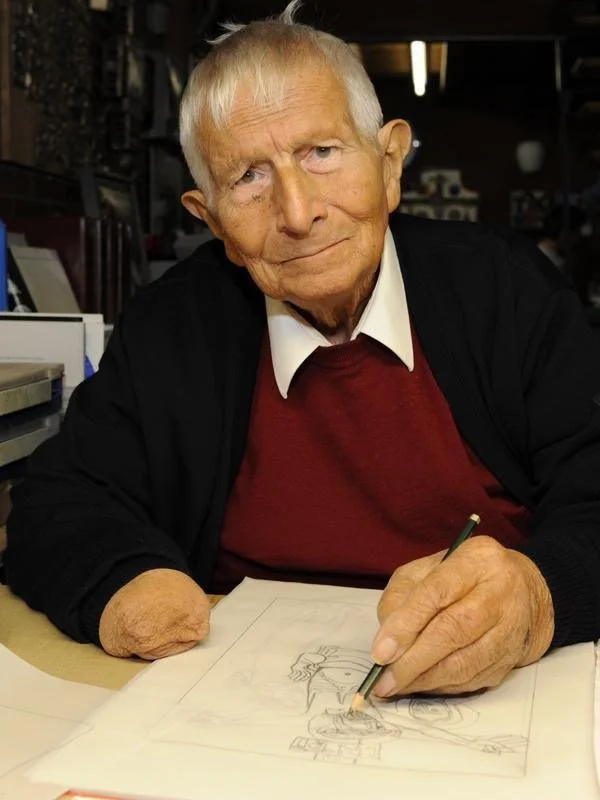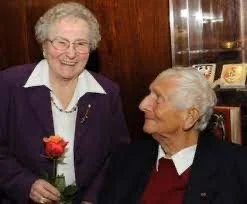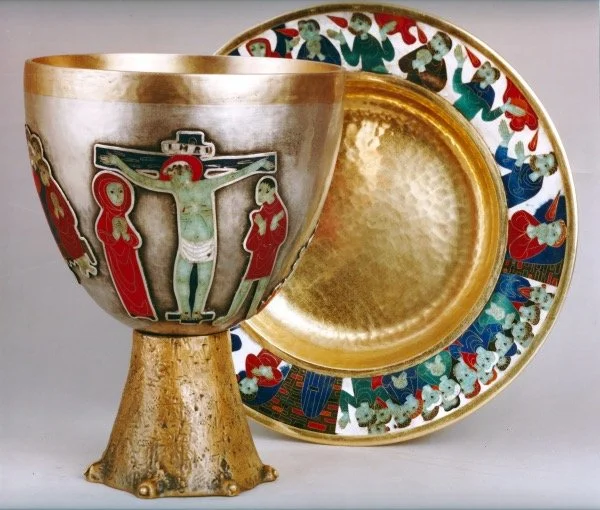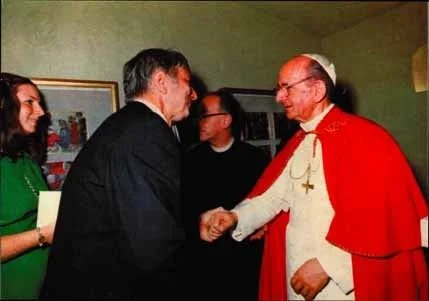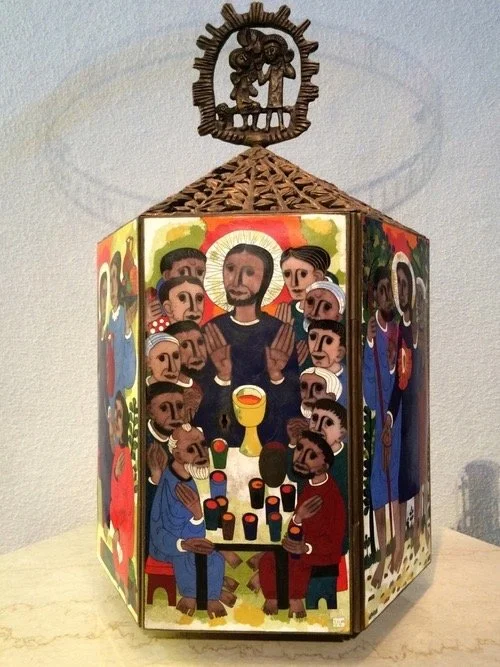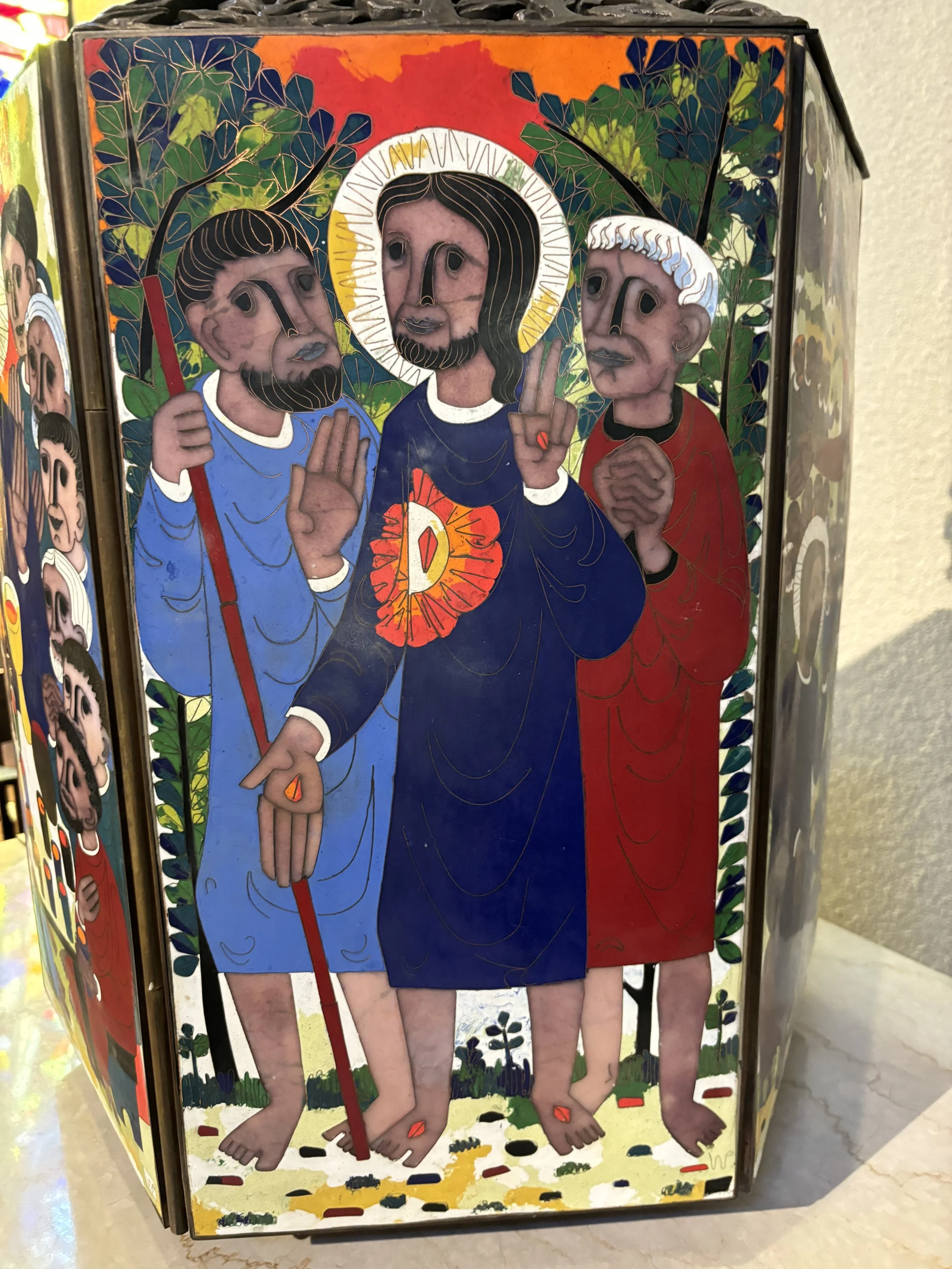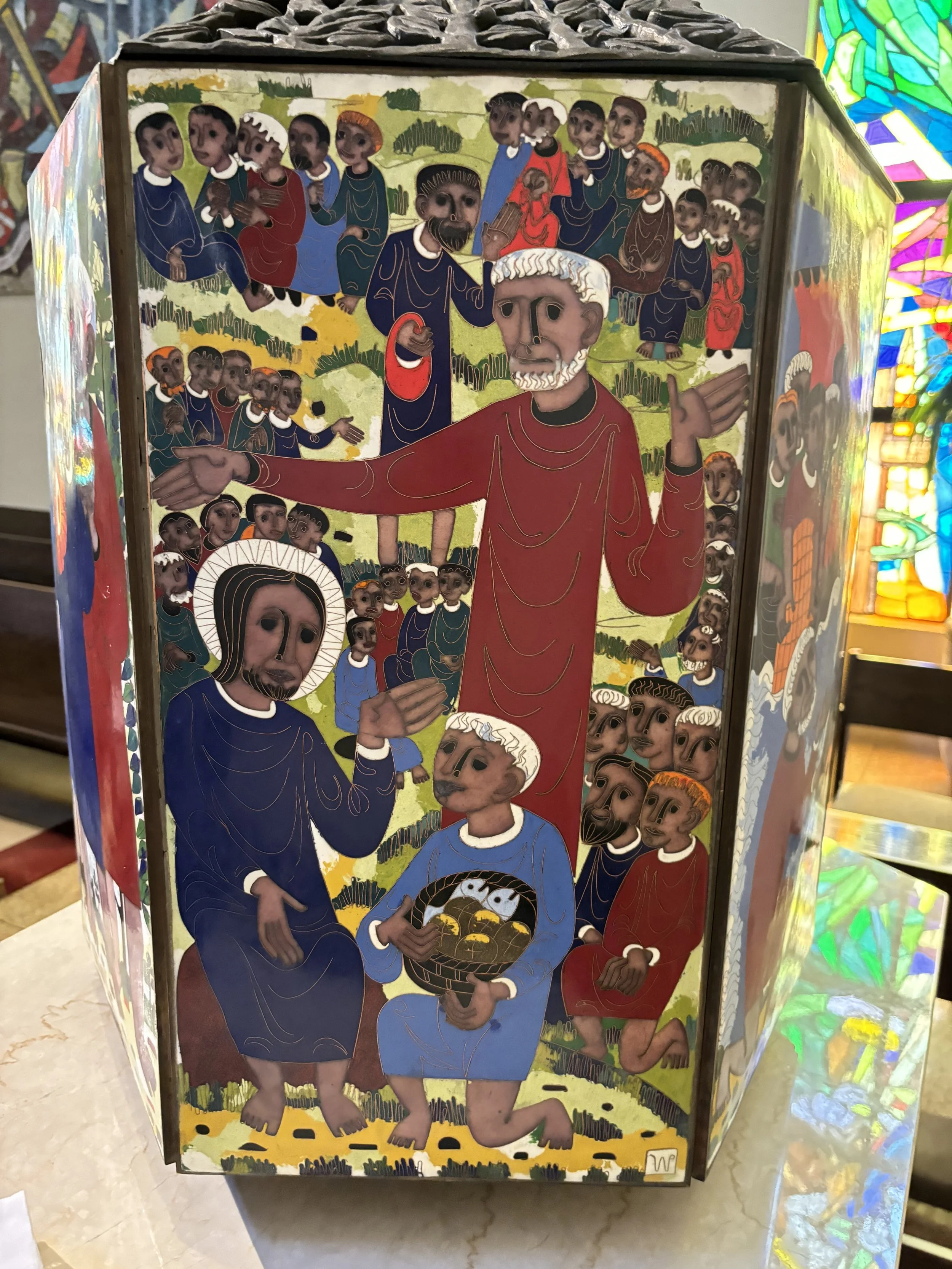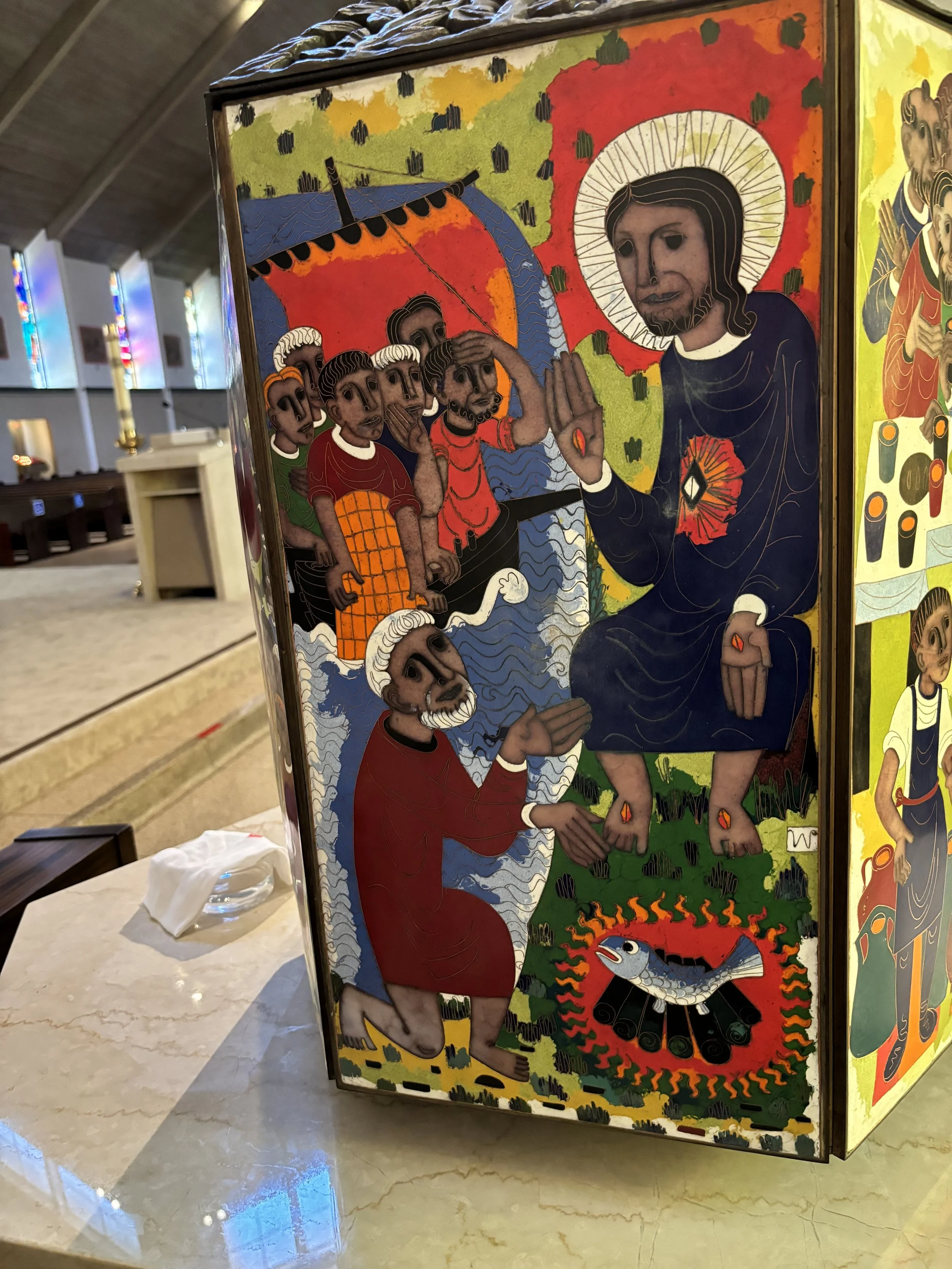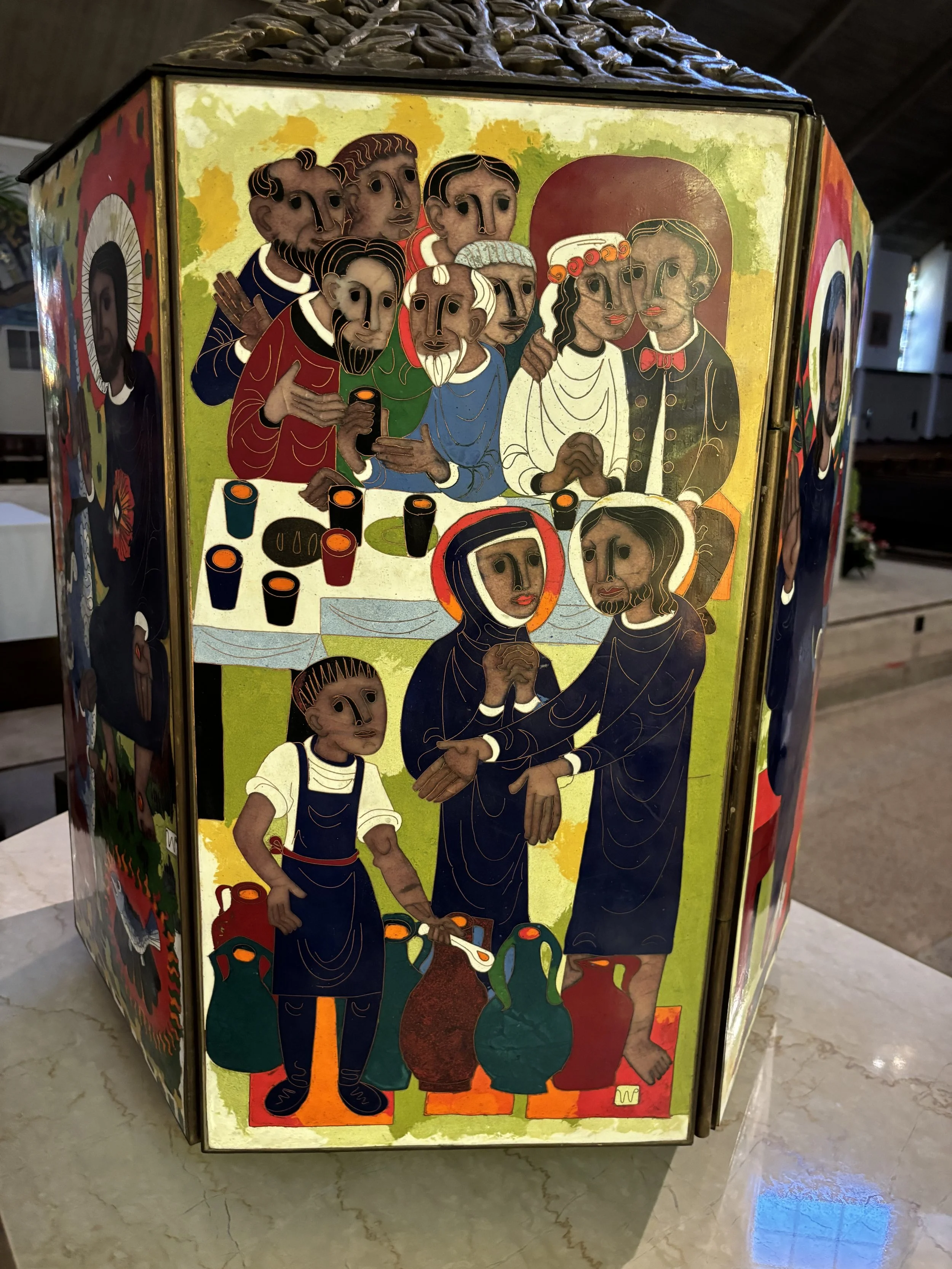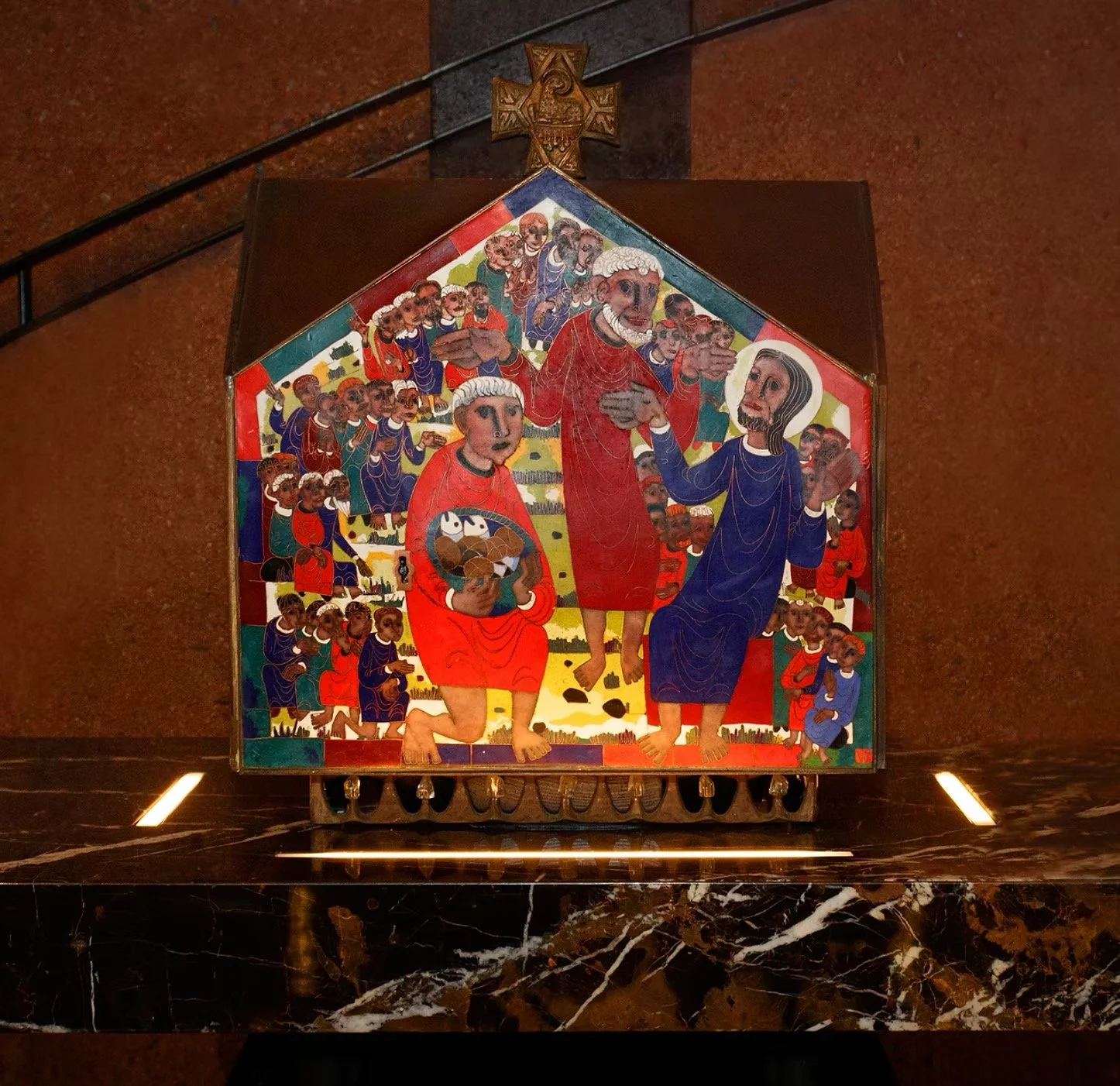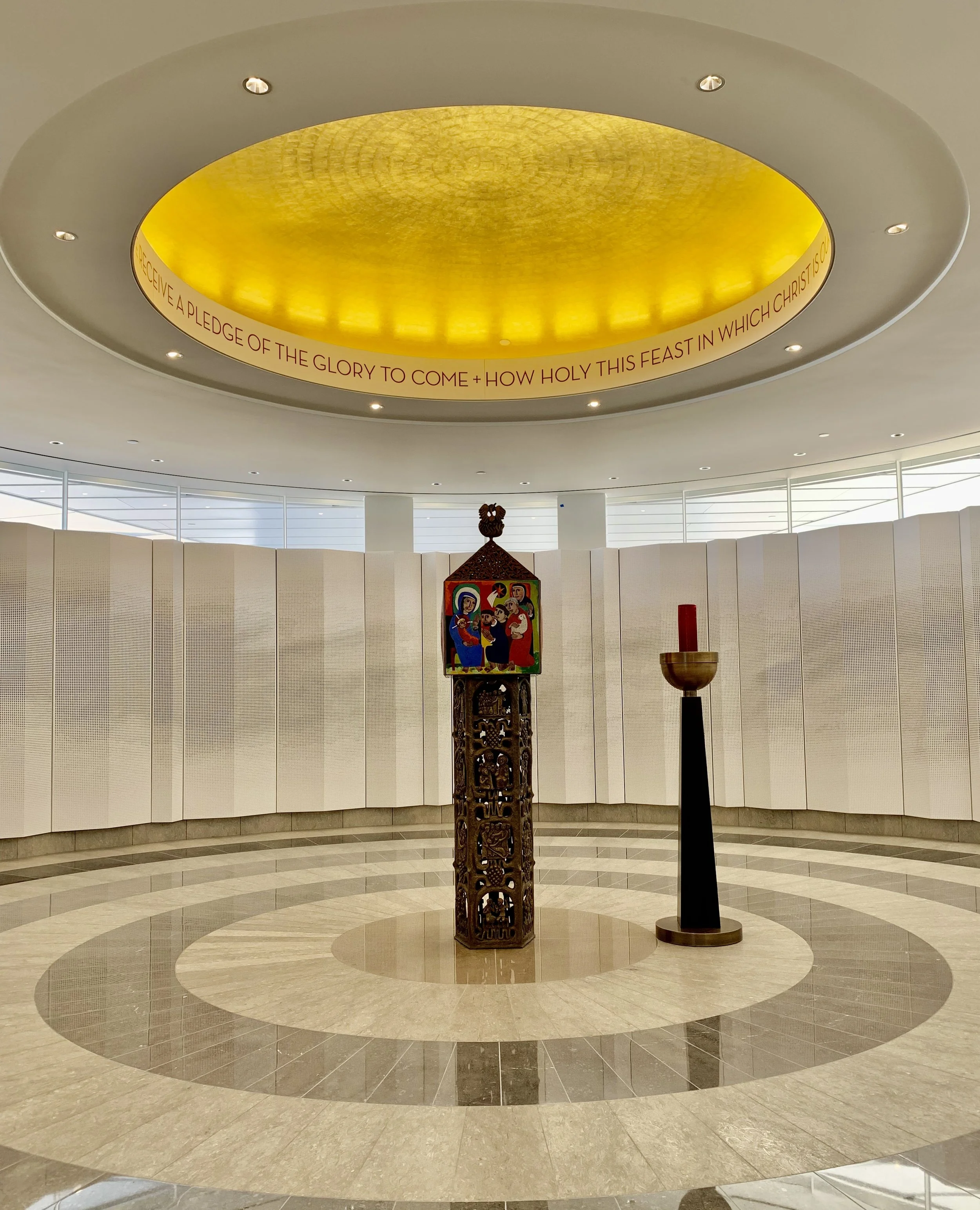One of the great experiences of my early priesthood was studying in Europe as I pursued by my post-graduate work in liturgical theology at the University of Louvain, in Leuven, Belgium, from 1977 to 1979. While on an excursion to Cologne, Germany, in those years, I encountered the liturgical artwork of one of the giants in contemporary church art of the 20th Century, Egino Weinert.
Born on March 3, 1920, in Berlin to devout Catholic parents the eldest of five children, the young Günter Przybylski heard Romano Guardini (considered one of the Catholic Churches greatest philosophers of the 20th century) preach. It was to have a lasting effect on his deep faith.
While preparing to receive his first Communion he was greatly attracted to the priesthood and in 1934 entered the Benedictine abbey at Münsterschwarzach. There he received the name Egino (years later his father changed the family name to Weinert). Egino had wanted to be a painter and a missionary, and was gradually allowed to apprentice in sacred painting, passing his goldsmith’s examination with distinction in 1941.
Jailed for refusing to say “Heil Hitler,” Egino was later drafted into military service taking every opportunity to work with other artists during the difficult war years. While visiting his parents in Berlin in 1945, he lost his entire right hand when an electrical fuse proved to have explosives hidden in it. He then taught himself to write and paint with his left hand. He returned after the war to the monastery and was finally sent to attend art school in Cologne. In 1949 he was refused final vows, leaving the monastery with his faith still intact, but alone in the world.
In 1951 he married Anneliese Leopold and they had four children. Eventually he settled in Cologne near the cathedral, and built a house and studio where he did all of his art.
It was this studio that I visited in 1977 and was utterly astounded by his magnificent liturgical art manifested in chalices, crosses, plaques, pectoral crosses and tabernacles. I vowed that day that if I ever had the opportunity, I would introduce his singular contemporary artwork to Southern California.
Commissions and honors gradually increased for the struggling artist. He was helped by the great popularity of the small crosses he made for children receiving Communion. His enamel designs proved to reproduce beautifully on cards and calendars. He delighted in crafting chalices for young priests and became popular with American visitors to his shop. Pope Paul VI admired a cup-shaped chalice that Egino told him the cathedral chapter in Cologne had considered unacceptable, but that the pope declared blessed through his own use.
Chalice and Paten with in silver and gold with champlevé enamel work by Egino Weinert
Egino Weinert with Pope St. Paul VI
"The continuity of Egino Weinert’s work, artistically and religiously, is remarkable. His simplified, sinuous forms recall Ernst Barlach and seem of themselves to demand the bold colors, dramatic and yet tender, of his unblended palette. His unerring sense of scale, indebted to medieval stained glass and Netherlandish primitives, enables him clearly to distinguish principal figures and onlookers in settings that are detailed but never crowded.
He has a miniaturist’s sense of intimacy and yet the elemental feeling of Georges Rouault, whom he has long admired. Perhaps the lovely miracle of his art has been possible because it has indeed been his mission. “I want to see the whole Bible with the eyes of our time and let it become plastic,” he says. “For me Christ is not an otherworldly figure floating over humanity in a long robe. He is in our midst as a simple farmhand or a cabinet-maker” - or as a good shepherd, as were generations of Egino Weinert’s ancestors." (Leo J. O’Donovan, S.J., is president emeritus of Georgetown University, Washington, D.C.)
WEINERT LITURGICAL ART IN SOUTHERN CALIFORNIA
One of the first churches in Southern California to introduce a Weinert crafted tabernacle was St. John Vianney in Hacienda Heights, the pastor engaged the well known Pasadena architect, John Bartlett, to design their new church. Visionary in its contemporary design following the Second Vatican Council, the pastor introduced two exquisite Weinert tabernacles, one behind the main altar and another on a side altar. Tragically, that church burned to the ground because of arson destroying the main tabernacle behind the altar.
It is my understanding, however, that the tabernacle from the side altar had been given to the Archdiocesan Center in Los Angeles for their chapel. Recently, I found out that that secondary tabernacle was given back to the newly built St. John Vianney and I’m presently pursuing the possibility of a photo.
WEINERT LITURGICAL ART IN THE DIOCESE OF ORANGE
Holy Family Parish in Orange
In 1999 while I was Rector of the then Holy Family Cathedral in Orange and at the expressed mandate of the third Bishop of Orange, Tod D. Brown, renovations began at the Cathedral to move the tabernacle from behind the cathedra to an appropriately adorned side area in the Cathedral. Since the original tabernacle dated from the building of the permanent structure in the early 1960’s and was of little intrinsic artistic quality, a donor graciously provided monies for a new tabernacle. After discussion with the representative of Egino Weinert in the United States, a large and worthy tabernacle was found in his studio in Cologne. The marble company of Carnivale and Lohr in Los Angeles crafted the new pedestal for the monumental tabernacle as well as a new marble cathedra for the bishop, replacing the historic wooden one. The new tabernacle was solemnly blessed in the Jubilee Year 2000.
Like stained glass in a Medieval Cathedral that taught the Gospel stories visually, so too, is the liturgical artistry of Egino Weinert. Each piece visually proclaims the Good News of Christ. Through child-like simplicity, the six enameled panels of this magnificent museum quality work of liturgical art, portrays Eucharistic theology in all of its multifaceted beauty.
The front of the Tabernacle depicts the foundational event that anchors our Eucharistic theology, the Last Supper.
The first panel on the right depicts the gospel scene narrated in Luke 24 when the Lord encounters the two disciples on their way from Jerusalem to the small village of Emmaus. They encounter the Risen Lord with the signs of his crucifixion on his hands and feet yet alive! Their doubts are dispelled as their hearts burn in the presence of the Risen Lord.
The finely intricate following panel depicts the miracle of the loaves and fishes where from a few small fish and bits of bread brought by a child to be blessed by the Lord, the multitude are feed.
The back of the Tabernacle depicts another post-Resurrection appearance of the Lord to his disciples who find him preparing breakfast for them on the seashore and their eyes are opened as he feeds them with his Risen presence.
The following panel depicts the Lord and his mother, Mary, at the wedding feast of Cana. At Mary’s request to save the bride and groom from the embarrassment of running out of wine, the Lord miraculously multiplies the wine with the very finest of wine. I always loved this depiction by Weinert where he portrays the bridegroom with a bowtie!
The final panel depicts the Lord at the home of his dear friends, Martha, and Mary. Martha is busy with hospitality, yet Mary is before the Lord in loving adoration.
It is by far one of the largest enameled tabernacles that Weinert ever crafted. Its multisided panels depict Eucharistic themes so characteristic of the evangelical and catechetical focus of Weinert’s incomparable liturgical art. We are truly fortunate to have this museum quality specimen of this great liturgical artist of the last century in our Diocese.
St. Vincent de Paul Church in Huntington Beach
In the early 2000’s under the pastorate of Fr. Jerome Karcher, St. Vincent de Paul parish in Huntington Beach began the building of its permanent sanctuary. Fr. Karcher, a priest of exquisite taste, commissioned Egino Weinert to craft not only the tabernacle for the new Church but also 14 Stations of the Cross. This was providentially one of the last commissions that Weinert accepted before his death in September 2012 at the age of 92.
Commissioned tabernacle at St. Vincent de Paul Church in Huntington Beach, CA
Christ Cathedral in Garden Grove
With the bankruptcy of the former Robert Schuller ministries, the legendary Crystal Cathedral campus was eventually purchased by the Diocese of Orange in February, 2012, the herculean project of transforming and repurposing the iconic post-modern Philip Johnson glass structure into the mother church of the Diocese of Orange began. Teams of architects and consultants began their intense and creative work to ‘make something beautiful for God.’
I was fortunate to be one of the liturgical consultants to work with a gifted and legendary Christian Brother in liturgical art and renovation projects throughout the United States, the late Br. William Woeger, to creatively design the interior liturgical space for the new Christ Cathedral. Working with the Los Angeles architectural firm of Johnson Fain, their principal architect, Scott Johnson, created a renewed and immensely creative interior space while respecting the original architectural lines of Philip Johnson.
After some research, I became aware that Weinert had one remaining tabernacle that he had personally designed and crafted that was on permanent display in the museum dedicated to his liturgical art in Cologne, Germany. Originally commissioned for a convent in Germany, that convent merged with another community and there was no longer a need for a tabernacle. Originally not keen on parting with this tabernacle, Egino’s widow eventually consented when she found out it would be destined for a new Cathedral in Southern California!
Egino Weinert Tabernacle in Christ Cathedral Blessed Sacrament Chapel
We were grateful to the generous contribution of Tim and Steph Busch whose donation made it possible for the Cathedral to acquire this final tabernacle crafted by this legendary liturgical artist of the 20th century.
Close up of bronze pedestal with Gospel stories and champlevé panels.
The following YouTube video was made by me shortly after the acquisition of the new tabernacle and explains its unique catechetical components together with the bronze pillar upon which it stands.
The tabernacle is in a separate intimate chapel off the main worship area in the Cathedral. It is simply adorned focusing the attention of worshippers on the divine presence within.
We are truly fortunate to have multiple liturgical art pieces of this iconic liturgical artist of the 20th century in our Diocese. His pieces are on permanent exhibit at the Vatican Museum of Contemporary Religious Art and in the Metropolitan Museum of Art in New York.
As St. Bonaventure so beautifully said, "The beauty of this world is a shadow of the divine beauty." May we look upon these images and indeed be reminded of our future glory.
